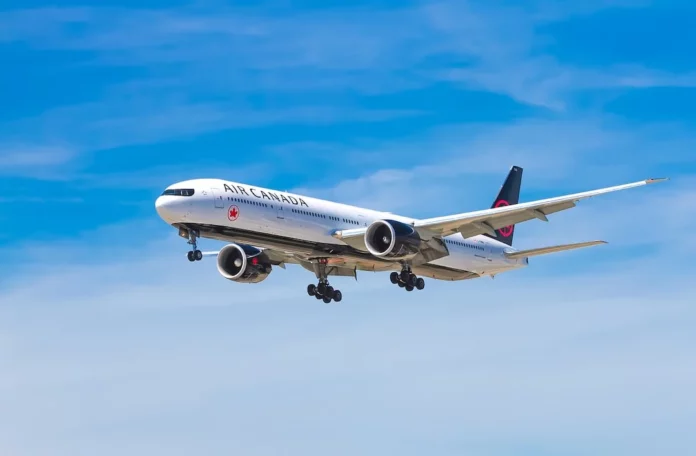Cross-start, also known as X-Start, is a term commonly used in aviation to describe a specific procedure carried out during the startup process of an aircraft’s engines. It involves starting the engines by crossing the starter switches, hence the name “cross-start.” This technique is typically used in aircraft fitted with multiple engines, such as commercial airliners and military aircraft.
The cross-start procedure is a reliable and efficient way to start the engines simultaneously, ensuring proper synchronization and reducing the risk of asymmetric thrust. It is an essential process that pilots and ground crew undergo before takeoff to ensure the aircraft’s engines are in prime condition for flight. In this article, we will delve deeper into the intricacies of cross-start in aviation and explore its importance in the industry.
The Cross-start Procedure
In the cross-start procedure, each engine is started independently but in quick succession. The process begins by selecting the start position on the engine control panel and engaging the starter motor. Once the first engine reaches a sufficient RPM (rotations per minute), the starter motor is disengaged, and the process is repeated for the remaining engines.
The primary objective of the cross-start procedure is to avoid sudden power surges or imbalances caused by starting multiple engines simultaneously. By starting the engines sequentially, the pilots can closely monitor their RPM and ensure they stabilize within the normal operating range. This helps prevent excessive wear and tear on the engine components and reduces the risk of an engine failure during critical phases of flight.
Another advantage of the cross-start procedure is the enhanced control it provides over the ignition system. By starting each engine individually, pilots can isolate any potential issues or malfunctions that may arise during the startup process. This allows for timely troubleshooting and rectification, ensuring the engines are running smoothly before embarking on a flight.
The Importance of Cross-start in Aviation
The cross-start procedure holds significant importance in aviation due to its impact on flight safety and engine reliability. Let’s explore some key reasons why this technique is widely employed in the industry:
1. Symmetrical Engine Performance: By starting the engines one by one, cross-start ensures they reach a stable RPM individually, minimizing the chances of thrust imbalance. Symmetrical engine performance is crucial during takeoff and landing, as it allows for better control of the aircraft during critical phases of flight.
2. Enhanced Engine Monitoring: The cross-start procedure enables pilots to closely monitor each engine’s performance during startup. This includes checking for abnormal vibrations, abnormal temperature rise, abnormal fuel flow, and other vital parameters. Detecting and addressing any issues promptly ensures the engines are functioning optimally before embarking on a flight.
3. Prevention of Asymmetric Thrust: Starting multiple engines simultaneously can result in asymmetric thrust if they do not reach the same RPM or produce equal amounts of power. Such a scenario can make the aircraft difficult to control, leading to potentially dangerous situations. Cross-start mitigates this risk by ensuring all engines start and stabilize at an equal RPM, minimizing the chances of asymmetric thrust.
4. Early Detection of Engine Failures: By starting each engine sequentially, any abnormalities or failures can be detected early in the process. In the event of a malfunctioning engine, the pilot can take appropriate action immediately to avoid compromising the safety of the flight. Early detection is crucial in preventing catastrophic engine failures at crucial stages of flight, such as during takeoff or landing.
5. Engine Longevity and Reliability: Proper engine start procedures contribute to the longevity and reliability of the engines. The cross-start technique allows engines to start smoothly and evenly, reducing stress on the engine components. Consistently following cross-start procedures helps to extend the lifespan of the engines and maintain their overall reliability, reducing the risk of unexpected engine failures.
Conclusion
The cross-start procedure, or X-Start, plays a vital role in aviation safety and engine reliability. By starting the engines sequentially, pilots and ground crew can ensure symmetrical performance, closely monitor engine parameters, and detect any early signs of malfunctions. This procedure significantly reduces the risk of asymmetric thrust and contributes to the longevity and reliability of the engines.
To maintain a high level of safety and reliability, it is crucial for aviation professionals to adhere to established procedures, including the cross-start technique. The X-Start process has been extensively tested and proven over the years, providing an efficient and effective way to start aircraft engines. By following these procedures diligently, pilots and ground crew contribute to the overall safety and success of flights.
For More: What is CV/DFDR in Aviation? (Cockpit Voice and Digital Flight Data Recorder)




